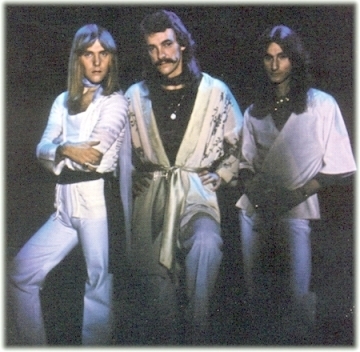2/1/12.
2112.
Get it?
Since none of us will be around a century from now to celebrate the official day all planets of the solar federation may rest easily with the knowledge that control has been assumed, today seems an appropriate occasion to bust out the air guitars.
I have tangled happily, lovingly, with this album’s legacy in the past. A full analysis can be found here. (But be careful, reading that could lead you here, which might in turn lead you here and down the rabbit hole you go…)
Highlights (or, depending upon your tolerance of ancient school prog-rock with a capital Pretense, low-lights) below:
It’s difficult to imagine how music might have sounded in the ‘70s and, by extension, today, if Rush had not made 2112. If Rush had never made 2112, they certainly would never have had the opportunity to make their masterpiece, Moving Pictures. While few bands can boast about creating two genre-defining statements, the reality—almost impossible to believe today—is that Rush almost never got the chance to make the first one.
Considering the first, 2112, led to the next, Moving Pictures, it makes plenty of sense for Eagle Rock’s Classic Albums to focus on both as the alpha and omega of Rush’s slow (and in hindsight, inevitable) ascension to superstardom. Rock fans and Rush fanatics could, and perhaps should, immediately ask why each album does not merit its own feature. It’s a fair question, and the simple answer is that they do. But the 50-minutes of bonus material mitigates the concerns and, in a sense, each album is ultimately given about an hour of loving examination.
For anyone not familiar with the Classic Albums series, the segments feature interviews and input from actual band members, which makes them equal parts compelling and imperative acquisitions for casual as well as hardcore fans. This one begins, appropriately, at the beginning, when bassist/singer Geddy Lee and guitarist Alex Lifeson are teenagers in the Great White North, emulating late ‘60s legends like Cream and Led Zeppelin. Along with original drummer John Rutsey (who later left the band due to health reasons, which were exacerbated by concerns of an exhaustive touring schedule), the band released their eponymous debut on their own label, and it may have disappeared into the Great White Nowhere, except a disc jockey in Cleveland (that great rock and roll city!) began playing it. After Rutsey exited, stage left, the band fortuitously auditioned an unknown Neil Peart, who became principal lyricist and eventually established himself as the premier drummer on the planet.
Rush’s follow-up, Fly By Night, fared well but their ambitious third album, Caress of Steel sold poorly. After an endless and thoroughly depressing series of gigs, which they not so fondly referred to as the “down the tubes” tour, there was genuine concern that their label might drop them. At this point, as Lifeson recalls, “there were one of two directions (to go): give in to the pressure or go for it.” The band all agreed that despite admonishments (and/or insistence) that they create a commercial-minded, radio-friendly effort, they were going to do it their way and feel good about it, no matter what the outcome.
After putting the finishing touches on their fourth album the band, and producer Terry Brown, strongly suspected that they’d captured something special. They were right. 2112 went straight to #1 in Canada and broke into the Top 75 in the US. Just over halfway into the decade, when many of the old guard progressive rock bands were out of ideas or on hiatus, Rush delivered one of the genre’s definitive anthems. 2112 is a harder edged music combining the proficiency of their influences with an aggression that captured the actual urgency attending the sessions. This album sounded—and still sounds—at once familiar and forward-looking, putting Rush somewhere on the sonic spectrum in between Led Zeppelin’s adventurous, riff-laden workouts and Pink Floyd’s deliberate, almost chilly precision.
The band, and Brown, reminisces about the music, how it was created, and the way(s) it was received. The rock media, which had not paid Rush much attention, now took notice and generally found the Ayn-Rand inspired storyline (the multi-track suite, filling up all of side one, updates Rand’s early novel Anthem and places the narrative in a dystopian future where music has been outlawed and long forgotten) unfashionably right-wing — an indictment the band found perplexing, and continues to be amused about. In these interviews, each member (particularly Peart, who wrote the lyrics and undoubtedly regrets his youthful shout-out, in the liner notes, to Rand’s “genius”) makes a convincing case that the inspiration had everything to do with artistic freedom and avoiding compromise, and less than a little to do with politics or social statements. Of course, plenty of pundits (then, now) find Rush –in general—and prog rock –in particular—pretentious, but the sentiment informing this particular album has more in common with the much celebrated punk rock ethos, with the added bonus that the band are actually quite capable musicians.
Curiously, the songs “Tears” and “Lessons” are skipped, although some welcome time is spent on the lighthearted ode to herb, “A Passage To Bangkok”. Likewise, the dated but not quite embarrassing “Twilight Zone” (which manages, all these years later, to sound almost charming in its way) is discussed while actual clips from the episodes referenced in the verses are shown. 2112 remains important as much for what it enabled as for what it did: it is no exaggeration to claim that we would never have gotten to Moving Pictures without it. The band agrees with the assessment that 2112 was the effort where they found their sound which they perfected over the course of their next several albums.
2112 remains the album that made possible what Rush would become, and it inspired both peers and pretenders to emulate their purpose and passion, if not their scarves and kimonos.


